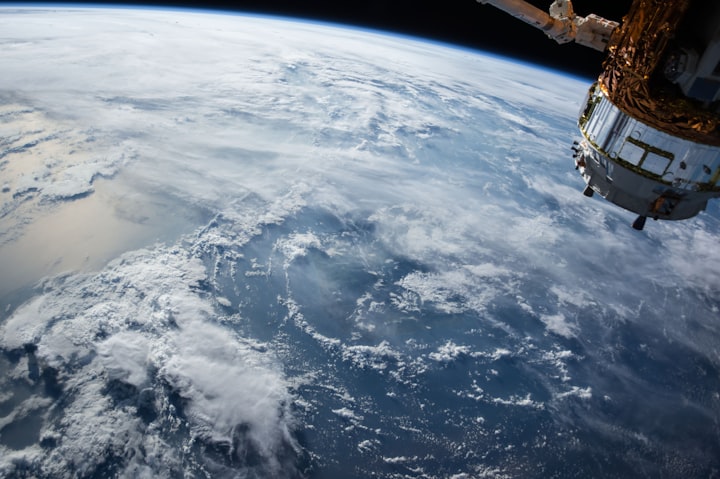The Upcoming Space Missions Around The Lagrange Points
Utilizing the famous parking spots in space
Any system of two massive, self-gravitating, and co-orbiting objects such as the Earth-Sun system or Earth-Moon system, produces five points of stability. Here the gravitational pull of both the objects balances each other and creates a small area that serves as a parking space for satellites and spacecraft missions. For some of those positions, even orbital corrections or control thrusters are not required. As well as there is low fuel consumption upon staying around those positions. These points are known as the Lagrange points or libration points or just L points.
Leonhard Euler discovered three of them a few years before the Italian astronomer and mathematician Joseph-Louis Lagrange discovered the other two, in the 18th century. He wrote an essay on “the three-body problem” in 1772, in which he extended the mathematical formulation of the preceding work by Euler.
They play an important role in space exploration. However, calculating the exact locations of these points is a bit complicated.
In this article, I will take Earth-Sun Lagrange points system into consideration.

Lagrange 1
L1 the most obvious and the most famous lies at the direct vector between Earth and Sun, at the shorter distance from Earth. It is the point where direct gravitational pull between the two bodies cancels out perfectly. L1 is important because the spacecraft placed there can provide us with a fully illuminated view of our planet Earth as well as the consistent visualization of the Sun. Since the consistent stream of radiations from the Sun and the other solar effects reaches L1 about an hour before reaching Earth.
Lagrange 2
L2 lies on the same vector but at the far side of the Earth. A satellite placed there will be in a higher orbit and is more distant from the Sun. Therefore it should orbit the Sun more slowly and is expected to fall behind the Earth; but the extra gravitational pull of our planet adds to that of the Sun’s, and allows the satellite to move faster, helping to keep pace with Earth. This location is better suited for space-based telescopes because Sun and Earth are always behind them, hence causing no interference.
Lagrange 3
L3 is located on the same line but the opposite side of the system. A spacecraft placed at that position will always remain hidden due to the presence of the Sun in between both. This place offers to observe the far side of the Sun.
Lagrange 4 & 5
The remaining two Lagrange points L4 and L5 lie at 60 degrees ahead of and behind the Earth’s orbit. They both form the equilateral triangles between the two masses.

Three of the L points including L1, L2, and L3 are metastable or unstable gravitationally. The satellites positioned there may drift away from there original position by the influence of some outside forces, so they require control thrusters for their orbital-corrections.
You can imagine the satellite being placed at these unstable points as a ball placed on top of the mountain with an abrupt peak. Now you can expect that a little tweak can easily knock out the ball off the mountain. This means if an object is slightly away from the desired position then it will start to drift towards the Sun or the outer solar system.
Meanwhile, L4 and L5 are stable points. You can imagine them as a ball placed in a deep valley, any outside force can displace the ball but the ball will eventually tend to move back to its original position. This means if the object is slightly away from the stable position then its orbit will shift accordingly.
These points tend to collect space junk like asteroids naturally. The massive gas-giant Jupiter has many Trojan asteroids clustered at these points through the gravitational interaction of Jupiter and Sun.
The on-going missions at Lagrange points
Nasa has been sending mission across these Lagrange points from years. L1 has been currently occupied by the Solar and Heliospheric Observatory (SOHO), the Deep Space Climate Observatory (DSCOVR), Wind satellite, and the Advanced Composition Explorer (ACE). SOHO is a solar telescope launched by the European industrial consortium, in 1995. It provides us with information about the change in Sun’s magnetic field as well as the unusual space weather including solar winds and coronal mass ejections etc.

DSCOVR was launched by SpaceX through Falcon 9 launch back in 2015. It is designed to study space climate and space weather etc.
Wind spacecraft was launched by NASA in 1994 to detect information about the radio waves and solar wind plasmas. Moreover, ACE is constructed to study the interplanetary medium.
L2 is currently occupied by the European space agency’s (ESA) Gaia telescope. It was launched in 2013 and has enough fuel to stay in orbit till 2022. It was built for astrometry, it provides us with the precise measurements of the positions and movements of the stars and other astronomical objects.
Another space mission living there is the Russian-German joint high-energy astrophysics observatory Spektr-RG. It was launched in 2019 and is expected to detect new clusters of galaxies and active galactic nuclei.
L3 is not useful for space exploration as it would be difficult to maintain communication with such spacecraft positioned there. This point is used to be famous for science fiction as enthusiasts can think for some extraterrestrial life or aliens-base hiding behind this Sun. The idea of Planet-X has been a popular topic in this field of vision.
Upcoming missions at Lagrange points
Scientists are always targeting to take advantage of these naturally amazing stable points. James Webb space telescope is a space-based telescope (successor of Hubble’s space telescope) that is destined to be put in halo orbit in 2021. It will provide us the results with improved resolution and sensitivity than Hubble.

Nancy Grace Roman Space Telescope (WFIRST) will be put in orbit around 2024, by NASA. This infra-red space observatory will be focusing on the cosmic expansion history of the universe and the measurements of the effects of dark energy.
Advanced Telescope for High Energy Astrophysics (ATHENA) will be going to occupy by halo orbit in 2031. It is an X-ray observatory by ESA and will provide us with improved spectroscopy and imaging capabilities.
PLATO (spacecraft) is a space-based telescope under construction by ESA, planned to launch in 2024. The main purpose of this telescope is the hunch for extrasolar planets.
Among all the Lagrange points, L1 is loved by the astronomers who study interplanetary medium while the people working in infra-red astronomy are more engaged with L2. Because infra-red astronomy requires to be shielded from hot objects like Sun.
Moreover, scientists are still imagining schemes to make good use of various Lagrange points around our solar system.
About the Creator
Areeba Merriam
Research student | MS mathematics
Pursuing my research in the field of general relativity.
As a hobby I write blogs about popular science topics and biographies of scientists.







Comments
There are no comments for this story
Be the first to respond and start the conversation.